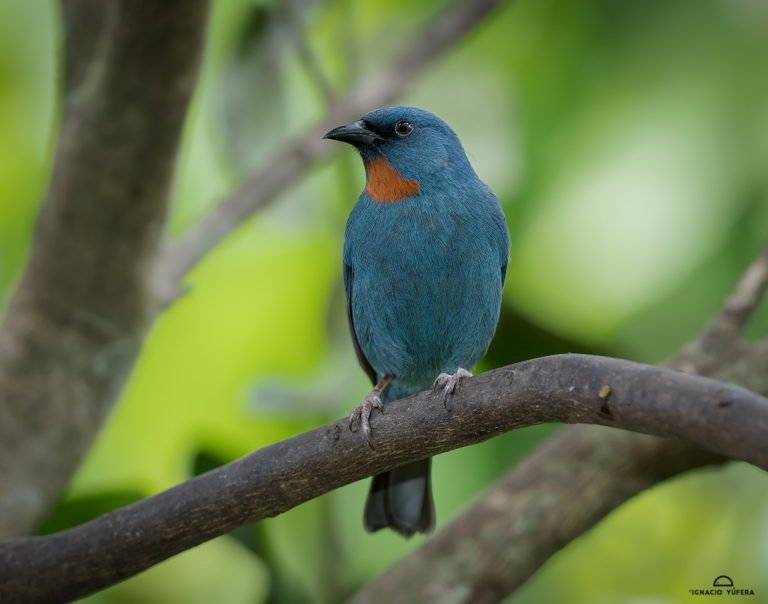Birdfinding.info ⇒ Easy to find at several of the frequently visited sites on Jamaica, especially the feeders at Rocklands Bird Sanctuary. Also common at Stewart Town, Hardwar Gap, San San, and Ecclesdown Road.
Orangequit
Euneornis campestris
Endemic to Jamaica, where it is widespread in humid montane and foothill woodlands, down to sea level along the northern coast. Sometimes also in gardens and dry woodlands.
Identification
Male is striking and distinctive: shimmering slaty-blue with an orange-chestnut throat patch. Its coloration shifts along a spectrum from slate-gray to vivid blue, depending on the lighting.
The biill is fairly long but heavy, sharp-tipped, and slightly decurved.

Orangequit, male. (Hardwar Gap, Jamaica; January 28, 2019.) © Matthew Grube
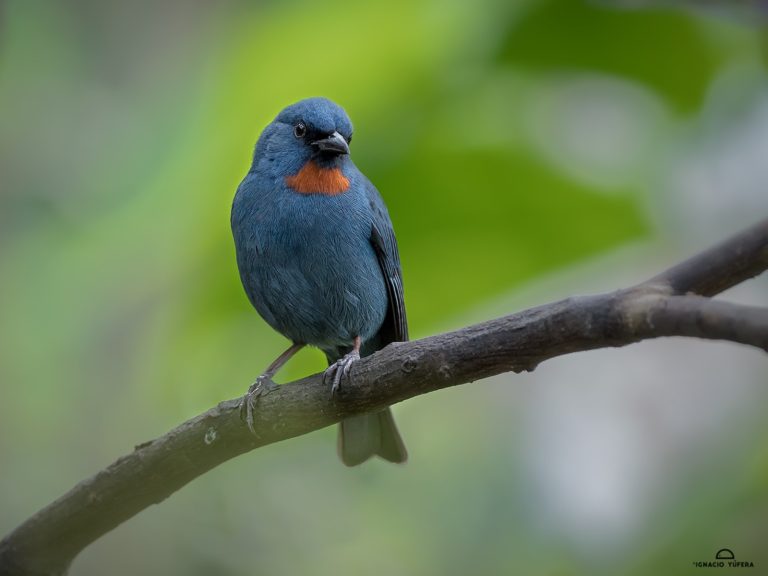
Orangequit, male. (Rocklands Bird Sanctuary, Jamaica; February 2018.) © Ignacio Yúfera

Orangequit, male with orange wedge. (Rocklands Bird Sanctuary, Jamaica; February 15, 2014.) © Eric W. Greisen
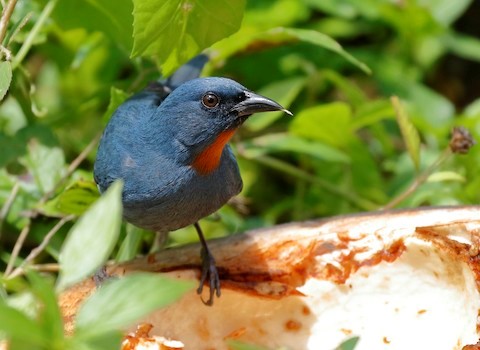
Orangequit, male. (Ecclesdown Road, Jamaica; March 14, 2019.) © Dave Curtis
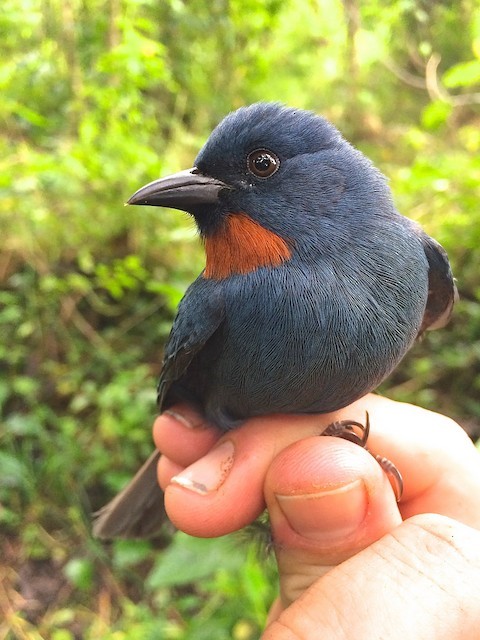
Orangequit, male. (Windsor Research Centre, Jamaica; December 4, 2014.) © Matt Brady
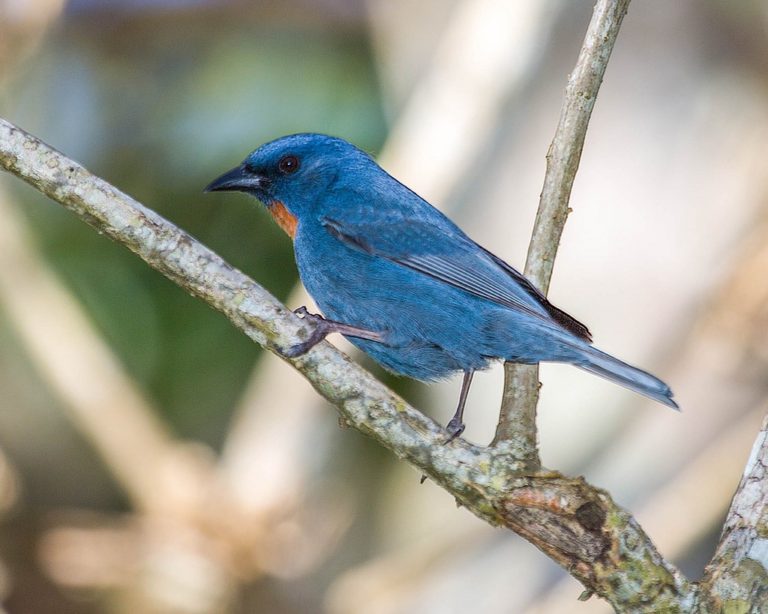
Orangequit, male. (Rocklands Bird Sanctuary, Jamaica; March 11, 2016.) © Ted Center

Orangequit, male. (Rocklands Bird Sanctuary, Jamaica; March 5, 2011.) © Louis Imbeau

Orangequit, male. (Hardwar Gap, Jamaica; January 28, 2019.) © Matthew Grube
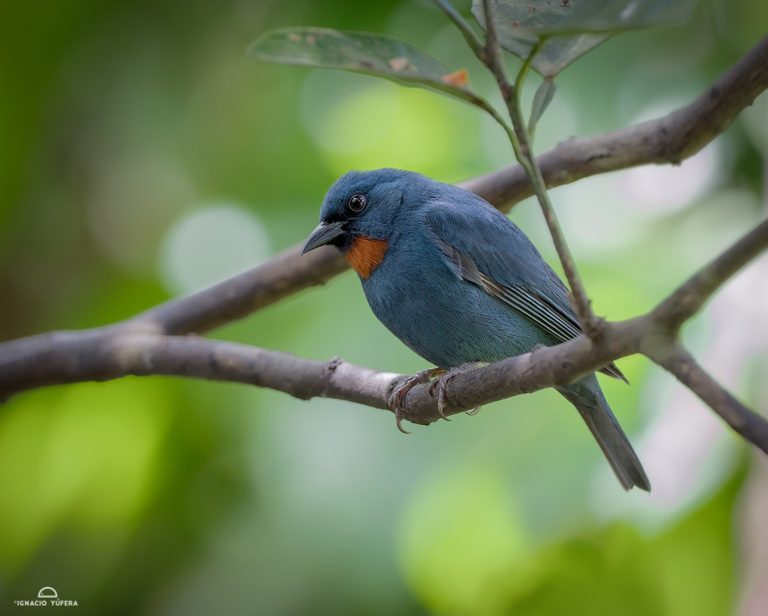
Orangequit, male. (Rocklands Bird Sanctuary, Jamaica; February 2018.) © Ignacio Yúfera

Orangequit, male. (Rocklands Bird Sanctuary, Jamaica; December 14, 2017.) © Nancy Boutin
Female is less distinctive than the adult male, with medium-brown back, wings, and tail, blue-gray crown, and gray underparts that become more brownish or yellowish toward the belly.
Immatures resemble females but browner where the female is gray. Males take two years to develop their characteristic plumage and closely resemble adult females during part of their maturation.
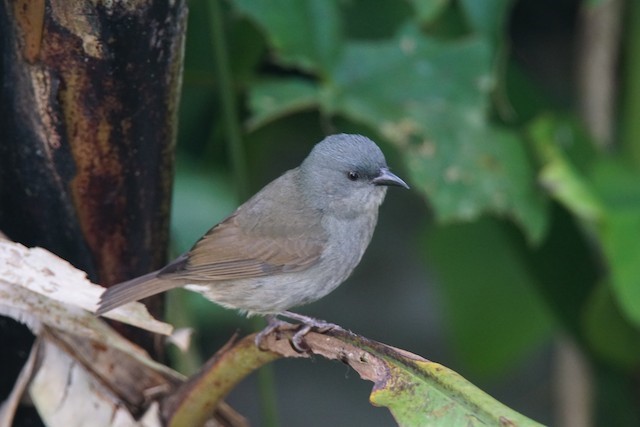
Orangequit, female or immature. (Hardwar Gap, Jamaica; January 11, 2018.) © Nevine Jacob
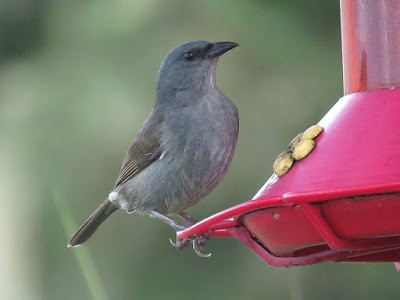
Orangequit, female or immature. (Hardwar Gap, Jamaica; February 5, 2017.) © Richard Fairbank

Orangequit, female or immature, showing resemblance to female Shiny Cowbird. (Rocklands Bird Sanctuary, Jamaica; February 15, 2014.) © Eric W. Greisen

Orangequit, female or immature. (Marshall’s Pen, Jamaica; July 7, 2008.) © Steve Metz
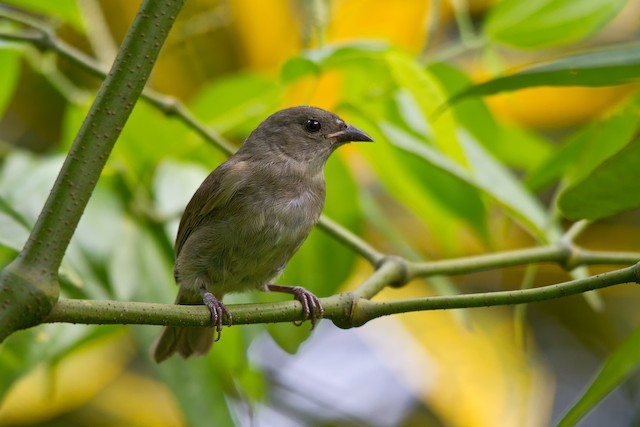
Orangequit, juvenile. (Rocklands Bird Sanctuary, Jamaica; August 31, 2018.) © Piet Grasmaijer

Orangequit, female or immature. (Rocklands Bird Sanctuary, Jamaica; March 11, 2016.) © Ted Center
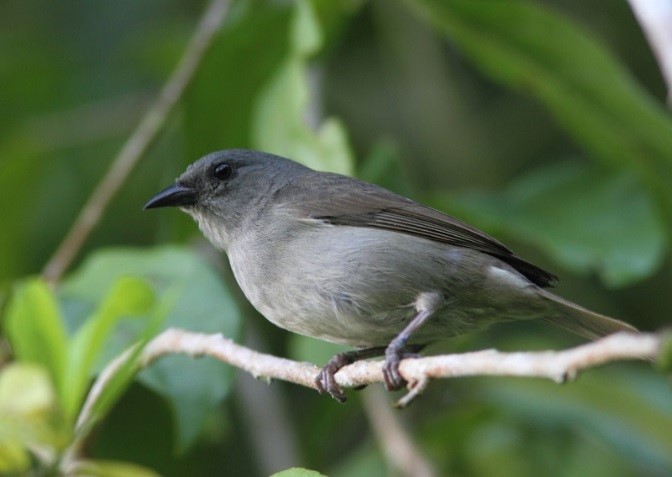
Orangequit, female or immature. (Jamaica; May 1, 2013.) © William Price
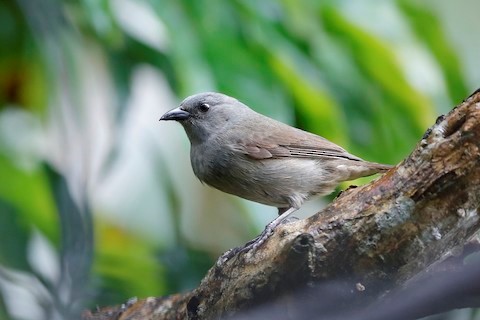
Orangequit, female or immature. (Rocklands Bird Sanctuary, Jamaica; February 28. 2020.) © Holger Teichmann
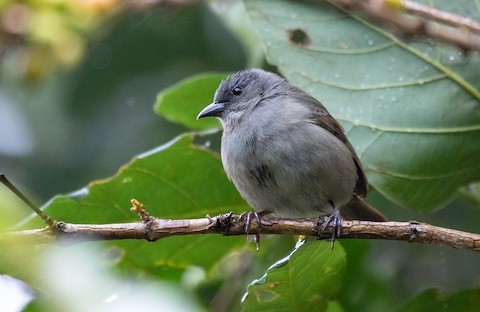
Orangequit, female or immature. (Silver Hill Gap, Jamaica; February 18, 2020.) © Suzanne Labbé
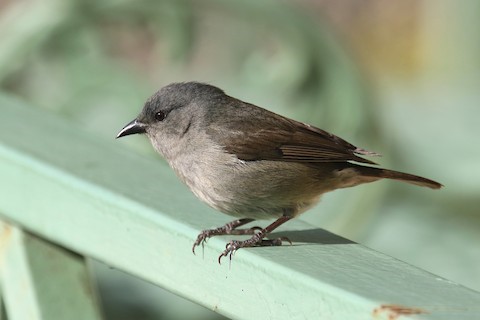
Orangequit, female or immature. (Silver Hill Gap, Jamaica; April 28, 2016.) © Stephen Gast
Cf. Shiny Cowbird. Female and immature Orangequits can be very similar to female and immature Shiny Cowbirds, which are approximately the same shape, color, and pattern. The cowbird is slightly larger and drabber, and has a straighter, sharper-tipped bill.
Notes
Monotypic species and genus.
References
BirdLife International. 2016. Euneornis campestris. The IUCN Red List of Threatened Species 2016: e.T22723722A94830296. https://dx.doi.org/10.2305/IUCN.UK.2016-3.RLTS.T22723722A94830296.en. (Accessed April 7, 2021.)
eBird. 2021. eBird: An online database of bird distribution and abundance. Cornell Lab of Ornithology, Ithaca, N.Y. http://www.ebird.org. (Accessed April 7, 2021.)
Haynes-Sutton, A., A. Downer, R. Sutton, and Y.-J. Rey-Millet. 2009. A Photographic Guide to the Birds of Jamaica. Princeton University Press, Princeton, N.J.
Kirwan, G.M., A. Levesque, M. Oberle, and C.J. Sharpe. 2019. Birds of the West Indies. Lynx Edicions, Barcelona.
Raffaele, H., J. Wiley, O. Garrido, A. Keith, and J. Raffaele. 1998. A Guide to the Birds of the West Indies. Princeton University Press, Princeton, N.J.
